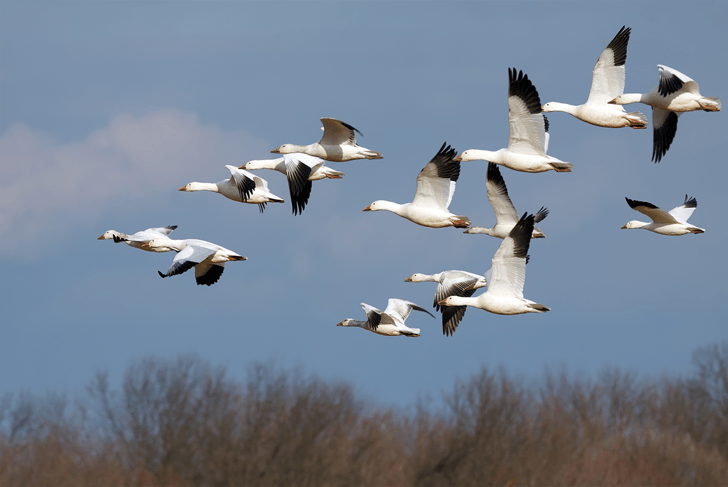Feathered Friends and Safety First: Should You Put Away Your Bird Feeder This Spring?
As the chill of winter fades and spring sunshine filters through budding trees, many backyard bird lovers eagerly refill their feeders. After all, there’s something heartwarming about seeing a goldfinch or chickadee stop by for a snack. But in light of a recent resurgence in avian influenza, some wildlife experts are suggesting it might be time to rethink the springtime ritual of feeding wild birds.
So, should you really stash your bird feeder this season? Let’s explore what’s behind the caution and how to support your local bird population safely.
Understanding Avian Influenza
Avian influenza—commonly known as bird flu—isn’t a new phenomenon, but the particular strain circulating in North America since 2022 has been cause for concern. Officially called H5N1, this highly pathogenic avian influenza (HPAI) strain is especially lethal, with a reported mortality rate of up to 90 to 100 percent in infected birds.
While the virus primarily targets birds—especially waterfowl like ducks and geese, as well as raptors such as hawks and eagles—it can infect virtually any bird species. It spreads rapidly through respiratory secretions and feces, and it can remain infectious on surfaces for months, making it a tenacious threat in shared spaces.
What About Human Risk?
Although bird flu can occasionally infect humans, such cases are rare and generally linked to close, prolonged contact with infected birds. For most people, the risk remains low. When infections do occur, symptoms can resemble a typical flu—think fever, cough, sore throat, fatigue—but more severe complications like pneumonia have been recorded in a handful of cases.
The bottom line? Avian flu is far more dangerous to birds than to humans—but helping to stop its spread still matters.
Reconsidering Bird Feeders in Spring
While many bird enthusiasts consider feeders an essential part of backyard birdwatching, some wildlife organizations—including the BC SPCA—urge caution, especially in the warmer months. The recommendation is not necessarily new: even before the current outbreak, experts advised limiting the use of feeders in spring and summer.
Why? For starters, birds have plenty of natural food available during these seasons. Insects, seeds, and nectar sources are abundant, meaning feeders are more about human enjoyment than bird survival.
More importantly, feeders draw multiple birds to a single location, encouraging unnatural congregation. When birds gather in close quarters, viruses like H5N1 have a greater chance to spread. Even fallen seeds beneath the feeder can create risk, attracting birds to forage on ground potentially contaminated by droppings.
Is It Safe to Feed Birds at All?
For most urban and suburban homeowners—especially those without backyard poultry—the risk posed by avian influenza is minimal. Songbirds, which are the primary visitors to feeders, are not the main carriers of the virus.
However, caution is still warranted. If you do choose to keep your feeder out, make sure you:
- Clean it regularly with a diluted bleach solution.
- Rake up fallen seeds and droppings underneath it frequently.
- Avoid handling wild birds or encouraging them to eat from your hand.
- Keep pets away from feeders and birdbaths.
- Watch for signs of illness in visiting birds—unusual behavior, disorientation, or visible injury.
Alternatives That Still Welcome Birds
If you love seeing birds in your yard but want to play it safe, you don’t have to give up entirely. Consider attracting birds the natural way—by planting native flowers, shrubs, and trees that provide food and shelter. A bird-friendly garden can offer nectar, seeds, insects, and berries, and it supports not only birds but the wider ecosystem too.
Try planting:
- Coneflowers and black-eyed Susans for seed-eating species
- Bee balm and columbine for hummingbirds and nectar-lovers
- Serviceberries or elderberries for fruit-eaters
- Dense hedges or trees for nesting and cover
This way, you can still enjoy their chirps and fluttering wings—while keeping them (and the ecosystem) a little safer.
When to Report and What to Watch For
Being vigilant can also help slow the spread of bird flu. If you see birds acting strangely—stumbling, unable to fly, or displaying signs of illness—or if you come across dead birds, don’t touch them. Instead, report them to your local wildlife authority.
In Canada, for example, you can contact the Canadian Wildlife Health Cooperative through their website or by calling 1-800-567-2033.
Doing Our Part for Our Winged Neighbors
Spring is a season of renewal—for plants, for people, and for wildlife. While it may feel like a small gesture, taking steps to limit the spread of avian influenza can have a big impact. Whether that means taking down your feeder, keeping it clean, or planting a bird-friendly garden, your actions help create a safer space for our feathered friends to thrive.
Let’s keep the birds singing—and keep them safe—by tuning into their needs, not just our own. After all, the joy of birdwatching is even sweeter when we know we’re doing right by the creatures

